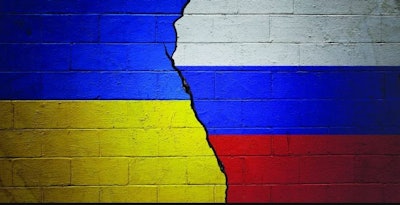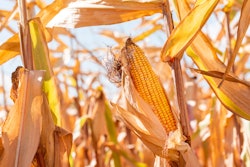
One year ago, Russian troops crossed the Ukrainian border, triggering the bloodiest European military conflict since World War II, and prompting Western countries to impose harsh sweeping sanctions the global economy has ever seen.
As the fights in Ukraine are dragging on, and Western sanctions against Russia keep piling up, improvements can hardly be anticipated in the grain industry of the Commonwealth of Independent States (CIS) region in the foreseeable future.
It was recently reported that Ukraine has exported almost 15.6 million tonnes of grain so far in the 2022/23 season, down 30.8% from the 22.5 million tonnes exported at the same stage of the previous season.
Ukraine war keeps grain market in depression
In 2022, Russia, the world's largest wheat exporter, harvested 158 million tons of grain, the highest figure ever, the Russian Agricultural Ministry estimated. However, floating export duty, soaring production costs, logistics challenges, and on top of that, Western sanctions have all come together to bring down a perfect storm on the Russian farmers.
Last year, prices of virtually everything grain farmers need to maintain operations skyrocketed in the Russian market as sanctions wreaked havoc on supply chains. For example, seeds prices jumped by 40% compared with the previous year, while spare parts and equipment prices more than doubled. In addition, the delivery time from a few weeks extended to up to 4 months, disclosed Maxim Misharev, head of the agricultural department of the Russian concern Pokrovsky.
On the other hand, low export – another consequence of the sanction pressure - has driven down prices on the Russian grain market by 30% to 50%, Misharev warned, adding that these factors severely undermined business profitability.
In the first three months of 2022, due to sanctions and general uncertainty on the markets, grain export noticeably lagged behind the previous year's level, said Alexander Korbut, vice president of the Russian grain union (RGU) estimated. Grain exporters managed to adapt to the new condition, however, and around November, foreign sales picked up the pace.
Looming oversupply
As a result, Russian grain export in November and December was one of the highest ever for this time of the year. Traditionally, during the last quarter, Russia exports grain in relatively small quantities, but this time companies rushed to export as much grain as possible to free storage capacities. In total, Russia exported 53 million tons of grain last year, while the Russian grain union calculated that the necessary minimum was close to 60 million tons.
"In the current situation, we are looking into large carryover stocks, between 20 and 30 million tons, which causes depression on the market. This depression is not just an assessment, but reality," Korbut said.
In order for grain producers to feel comfortable, by July 2023, Russian needs to export 65 million tons of grain, including 51 million tons of wheat, estimated Dmitry Rylko, CEO of the Russian think tank IKAR, adding that this is highly unlikely to happen.
"According to our very optimistic estimates, by the end of the current season, grain export will reach 53.5 million tons, including 44 million tons of wheat. This will leave us with tremendous carryover stocks of 25.5 million tons of grain, including 17.7 million tons of grain. This has never happened in Russia before," Rylko said.
In December 2022, the Russian government imposed a 25.5 million quota on grain export between February 15 and July 30. In September, RGU asked Russian President Vladimir Putin to introduce a grain export quota as a replacement for the floating export duty. Arkady Zlochevsky, president of RGU, have repeatedly been voicing concerns that export quota incurred considerable losses to Russian farmers, some of which were even operating at a loss.
Some market players warned that having warehouses fully stocked, farmers were reluctant to sow grain at the end of 2022. The situation could only worsen at the beginning of 2023, especially since the prices of seeds, fertilizers and equipment keep rising.
Worsening expectations
In addition, due to a lack of profits in 2022, Russian grain farmers scaled down their investment programs, and now there are fears pertaining to the condition of the agricultural equipment.
"The huge harvest that we received, plus late harvesting, could not but result in a substantial wear of agricultural machines," Korbut said. "Therefore, the question of what condition the equipment will be in by the start of spring field work also becomes quite important."
Sanctions have also barred the way for a part of Western equipment into the Russian market. So far, this problem is not critical, but it can become so in the future. Some companies have already started looking for alternative suppliers in Asia or trying to source spare parts for European equipment through third countries under a scheme known as a parallel import.
One way or another, Russia is likely to collect less grain than in 2022. The Russian Agricultural Ministry forecasts this year's harvest at 125 to 127 million tons. In the long run, there are other factors that could undermine Russian grain production.
One of the largest Russian sugar producers, RusAgro, has even prepared a plan for the operation of its Belgorod assets in case of the escalation of the Ukrainian conflict to the Russian territory, Alexander Tarasov, financial director of RusAgro, said during a conference call.
"For all the assets that we have in close proximity to the border, we have very detailed plans for what we do if the situation worsens," he said, as quoted by the Russian state news outlet Interfax.
Ukrainian grain industry hits the bottom
In 2023, Ukrainian farmers can sow 45% of grain fields and harvest 60% less grain than in 2022, Alex Lissitsa, CEO of the Ukrainian club of agricultural business (UCAB), estimated.
Such sharp negative production dynamics are a consequence of several factors. In addition, abandoned fields are associated with a drop in productivity, low exports and soaring inflation. If this forecast comes true, this year's grain harvest will be the weakest since the Ukrainian independence.
Out of the 28.4 million hectares of area sown in 2021, only 24.6 million are in the territory controlled by Kyiv. Around 3.8 million are controlled by Russian troops, and exactly the same figure is located too close to the frontline to sow and harvest grain.
In addition, the entire production chain is in turmoil as logistics is a nightmare, and export issues took a heavy toll on the companies' budgets last year. Grain prices are still varying drastically among the Ukrainian regions. For instance, in Transcarpathia, corn price currently stands at UAH 6800 per metric tonne ($185), while in the Sumy region, it is as low as UAH 4900 per metric tonne ($133). Even in the western regions, however, located close to the European border, the current price level makes grain production unprofitable, Lissitsa said.
Shortly after the beginning of the military conflict, the Russian navy imposed a blockage on Ukrainian seaports. For Ukraine, a large grain exporter, a lack of export became a heavy blow. Prices on the domestic market nearly halved, and a lack of grain storage capacities put additional pressure on operations. Things stabilized only in August, as grain export by sea was resumed under the Grain Deal.
In 2023, Ukrainian grain farmers can allocate up to 9.7 million ha of the fields for oilseeds, 32% more than in the previous year, Lissitsa estimated. Such a change is expected due to the increase in the prices of oilseeds in the global market, which is twice as high as cereals.
Ukrainian grain farmers believe that 2023 will be the worst, and the grain industry could start its path to recovery already next year. As with almost anything in Ukraine, however, it will depend on the situation on the battlefield, where prospects remain highly uncertain.

















